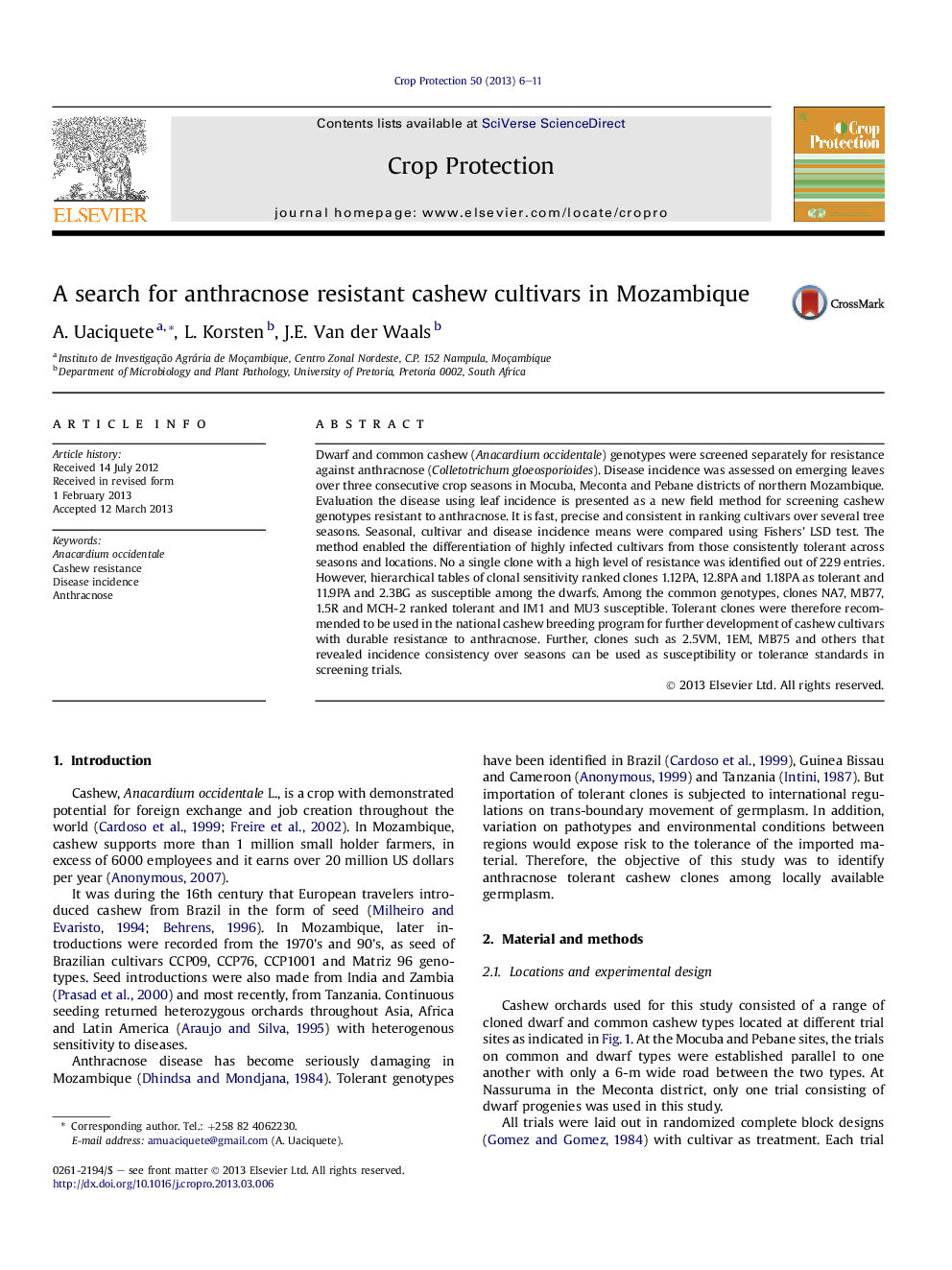| Article ID | Journal | Published Year | Pages | File Type |
|---|---|---|---|---|
| 4505972 | Crop Protection | 2013 | 6 Pages |
Abstract
Dwarf and common cashew (Anacardium occidentale) genotypes were screened separately for resistance against anthracnose (Colletotrichum gloeosporioides). Disease incidence was assessed on emerging leaves over three consecutive crop seasons in Mocuba, Meconta and Pebane districts of northern Mozambique. Evaluation the disease using leaf incidence is presented as a new field method for screening cashew genotypes resistant to anthracnose. It is fast, precise and consistent in ranking cultivars over several tree seasons. Seasonal, cultivar and disease incidence means were compared using Fishers' LSD test. The method enabled the differentiation of highly infected cultivars from those consistently tolerant across seasons and locations. No a single clone with a high level of resistance was identified out of 229 entries. However, hierarchical tables of clonal sensitivity ranked clones 1.12PA, 12.8PA and 1.18PA as tolerant and 11.9PA and 2.3BG as susceptible among the dwarfs. Among the common genotypes, clones NA7, MB77, 1.5R and MCH-2 ranked tolerant and IM1 and MU3 susceptible. Tolerant clones were therefore recommended to be used in the national cashew breeding program for further development of cashew cultivars with durable resistance to anthracnose. Further, clones such as 2.5VM, 1EM, MB75 and others that revealed incidence consistency over seasons can be used as susceptibility or tolerance standards in screening trials.
Related Topics
Life Sciences
Agricultural and Biological Sciences
Agronomy and Crop Science
Authors
A. Uaciquete, L. Korsten, J.E. Van der Waals,
